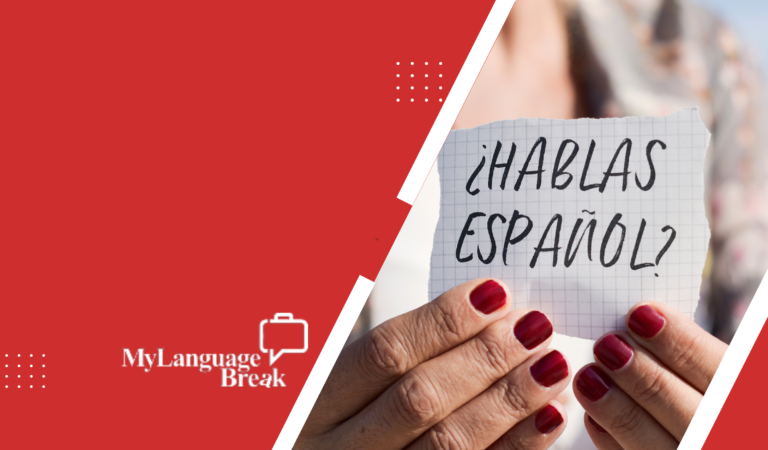Can Korean and Chinese Understand each other Language?
If you have the confusion of the Korean and Chinese languages, let’s quash first some myths between these two languages to clear things out.
Can Korean and Chinese Understand each other language? No, they can’t. Korean and Chinese can’t understand each other. They have a distinctive language family, Chinese belongs to the Sino-Tibetan (also known as Trans-Himalayan family) while Korean is a Koreanic language (consisting of the modern Korean language collectively with extinct primeval relatives).
Although Korean used Chinese characters for writing communication but later replaced with the Hangul alphabet. Today Korean language contains more than half of the Chinese vocabulary words however; Korean had its own heritage of reading texts aloud, the so-called Sino-Xenic pronunciations.
This enormous influx directed to changes in the phonological construction of the Korean language, distributing to the expansion of the division of vowel consonance in Korean.
Due to historical reasons Chinese influenced Korean language thru borrowed words and character representation, but it doesn’t support the speculation that Korean and Chinese can understand each other’s language.
Moreover, the Korean contribution on how to write words typically follows native Korean words, including grammatical endings, particles and honorific markers are mainly written in Hangul, which is the official writing system of both South and North Korea and never in Hanja (Chinese Characters).
What are the differences between Korean and Chinese?
It can be easy to confuse Chinese and Korean if you don’t have the idea about these languages. Having a few similarities, these two languages are very unique to each other, and each one shows its own set of complications. Except you’ve managed to learn all these languages, you can spot their differences. To help you, below are the facts that may lead you in understanding their differences.
Grammar
Chinese and Korean are very different in grammatical structures. Learners will be pleased to discover that Chinese grammar is far more straightforward than Korean it has a structured language of an SVO (Subject+Verb+Object) and the word order is very close to that of the English language.
While Korean grammar structure is going to be subject-object-verb (SOV), both obviously contradicting in terms of their grammatical structures. They have a couple of inconsistencies in grammar rules as well. You have to be attentive to every word in a Korean sentence to know the meaning and context.
Pronunciation
The Korean language is composed of wide different sounds and has Sino-Xenic pronunciations. Its pronunciation is the use of measure words, nouns or counter that goes with it. While Chinese language is structured on 4 tones, which can radically change the meaning of a word or a sentence if pronounced mistakenly. This can bewilder at the start, and for learners it can be hard to remember the pronunciation of different words, but later on you’ll find it easier without struggling for it.
Writing System
There are two general standards of Chinese characters simplified and traditional Chinese. Chinese characters are a type of logogram, which are written symbols that represent words rather than sounds.
While the Korean language uses the Hangul alphabet, composed of 14 consonants and 10 vowels, symbolized by certain shapes.
The Korean letters are written in syllabic blocks described as an “alphabetic syllabary” by some linguists. The alphabet letters positioned in two dimensions as it incorporates the characteristics of alphabetic and syllabic writing systems.
In South Korea, you can still find Hanja (Chinese characters) at times, but the script is becoming obsolete today.
Nouns
Korean nouns do not have grammatical gender and can be made plural by adding a suffix to the end of the word, but when the plurality of the noun is present from the context the suffix is not used.
Chinese noun can be a subject, an object, or a compliment, but never act as a result. Sometimes it can be an adverbial, but not always and not be modified by the negative adverb.
Example:
Numerals
The Korean numerals have two regularly used sets, namely; a native Korean set and a Sino-Korean set. The Sino-Korean system is closely based on the Chinese numerals. The contrast between the two numeral systems is very important. Everything that can be counted will either use one of the two sets, but rarely both.
Reading
Apparently, Korean and Chinese have a different reading system in characters and words. Korean had particular ancient reading text aloud. There are some rules in reading Korean characters it changes when pronouncing the letters. It’s more complex in terms of spelling and difficult to identify words by only listening.
The Chinese language has a tonal language; it has a different tone emphasizing different meanings. Conventionally, and Chinese text was written in vertical columns which can be read from top to bottom and right to left.
Chinese characters do not establish an alphabet or a compact syllabary. Preferably, the writing system is broken logosyllabic; that a character mostly represents a syllable of spoken Chinese and may be a word or a part of a polysyllabic word.
Difficulties of Learning Korean and Chinese Languages at the Same Time
Any person can learn these two languages at the same time, but not applicable as these languages have difficulties involved in every aspect.
The details presented here will sensibly direct the problem of learning two languages at the same time. Chinese is an out most difficult language for any human outside China to learn. Korean for many is also a compound language. If a person wants to learn both at once, this will be a great challenge.
Learning both languages may lead to confusion
Many language experts advised most people not to learn two closely identical languages at once, with the similarities that these languages have, it may lead to confusion. Korean and Chinese languages have language differences which have several words that overlap and have similarities that shared identical meaning.
Another reason not to learn two identical languages at the same time you would be confused to use the words from one language into another language.
Eventually, learning two languages such as Korean and Chinese is misleading. Both contained with words and parts of speech that have been borrowed from each other. Problems occur when studying it at the same time it is hard to configure as these languages have complexity in all aspects.
Chinese the hardest language
The Chinese language is a challenging language for foreigners to learn. It has to do with its writing system makes the Chinese language very hard to master, the pronunciation and unfamiliar cognates are tough. The writing system alone, even puzzled native Chinese speakers how much more to some foreigners trying to learn it.
Korean is a compound language
Korean is just as compound as Chinese. It utilizes a vast amount of written symbols really hard to grasp and have difficult sounds. As there are varying versions for every parts and regions of the country. Though learning these languages will help people to communicate or whatever the reasons, however, these brought a greater confusion to learners if done at the same time.
Pros and Cons of Learning Korean and Chinese Languages
Pros of learning Chinese language:
Business – China is the biggest marketer around the world. The economy has boomed widely and one of the biggest exporter countries today. Learning Chinese while in business is advantageous.
Most Spoken language – Chinese is one of the most spoken languages, along with English and Spanish. Approximately there are billion speakers around the globe today.
Reach in Culture and Historical Places – Chinese culture has one of the most interesting cultures in the world. They have the Great Wall of China which is the legendary and one of the historical places- Terracotta warriors, Silk Road, and so forth.
Language – Chinese language is immensely difficult compared to the Korean language, but the grammar is simple and the pronunciation is manageable with some practice. Definitely, you need to learn a massive amount of Chinese characters which will get better over time.
Access to Korean and Japanese languages – it would be simpler for you to learn Japanese or Korean once you’ve learned Chinese. These three languages all shared Sino-vocabulary. There’s less struggle to learn verbs on levels of speech unlike Korean.
Cons of learning Chinese:
The Long process of learning – fluency cost many years to learn that results more expenses and time.
Regional dialect distinction – foreign learners study the “Standard Mandarin” which is officially used in Beijing and other places in China. However, many Asian countries like China, where Standard Mandarin will not work, mostly in rural areas.
More Expensive– .Although there is online channels offering live teaching if you want to be more functional like a native Chinese speaker, you preferably move to China and pay a large amount to learn and take classes.
Pros of learning a Korean language:
Reach in Culture-Mainly the reason why most people wanted to study Korean because of the culture. Some are very interested in Kpop (Korean pop songs), Korean dramas, etc. You’re more advance over your friends if you know how to speak Korean.
Business -this is very important if you have the edge to speak Korean when dealing business with native Korean speakers.
Korea is the biggest investor of the leading brands- Samsung and Hyundai which more beneficial if you speak Korean when making transactions with them.
Travel – like China, Korea has rich culture as well. Not all Koreans can speak the universal language which is English. When traveling communication is very important and learning Korean is the key to understand them. Understanding Korean really helps, especially if you’re roaming around the area road signs, restaurants and others are written in Korean script.
New opportunities -if you are English speaker or you know how to speak English and Korean, many opportunities will come. Online world opens this opportunity to everyone who has fluency in speaking these languages. You can teach, earned and help.
Korean alphabet is simple – Understanding Hangul relies on understanding the basic. You can quickly learn Korean Vocabulary fast and achieve better reading comprehension.
Cons of learning Korean language:
Complexity – the honorifics are hard though the alphabet is easy. The phonological structure and the extension of the division of vowel consonance in Korean are complex which led to confusion.
You can only use the language around Korea -you can only utilize your fluency in speaking Korean within Korea. It won’t have much use outside the country except meeting Korean business partners.
Overall, it depends on your interest and desires.
Both have difficulties in each aspect, and learning one at a time is the best option. If you wanted to learn these two languages look the pros and cons to help you balance which one is right and best for you.
Related Questions:
How to distinguish between a Korean and a Chinese Character?
Chinese text
The Chinese text was formed with columns, the first column being on the right side of the page, and the last column on the left. In a traditional Chinese text written with little or no punctuation, sentence and phrase breaks can be distinguished by context and rhythm. Vertical Chinese requires space used for effect, such as marks or on the spines of books.
See how most of the characters are very square and compacted.
Korean mixed script
Korean mixed script, is a construction of writing the Korean language that uses a combination of the Korean alphabet (Hangul) and Chinese characters (Hanja).
In Korean mixed-script writing, words are mostly written in Hanja especially in formal and academic contexts,’ whereas syntax or ‘function’ is carried with grammatical endings, honorifics and particles written in Hangul.
As in traditional Chinese writing, Korean texts were written top to bottom and right to left. Currently, it is consistently written from left to right with spaces between words and western-type punctuation.
The above characters are written in Hangul. See the several circular shapes in Hangul—these are barely not present in the Chinese writing system which make the script easy to determine.
Which language is easiest to learn Korean or Chinese?
Chinese
In Chinese the grammar is easy the same way with the grammatical structure in English -exceptions to rules and fewer conjunctions. There is a medium to hard in tones and speaking, especially if you are an English speaker. But English speakers equipped with a solid arsenal of phonetics which helps in learning the tones in due time.
Reading/Writing is hard. The characters in Chinese are very confusing. You should know all the characters to be functional in Chinese.
Moreover, as the Chinese writing system has two sets traditional and simplified the complexity of this language is wide.
Korean
Korean Grammar is also hard since the two languages have contrast in grammatical structures. If you are a Japanese learning Korean it would be much easier for you to grasp.
Learning Korean speaking is medium. Korean language doesn’t have tones unlike Chinese, but it has some difficult sounds. The English speaker would find this aspect difficult, however, with exposure; application and practice all become easier.
Reading/Writing is easy to medium. In Hangul reading is based on individual letter not the entire syllables, much like with English letters. There are some rules of reading Korean that changes how you pronounce the particular letters. It’s somewhat more complicated in terms of spelling. You can’t determine words by just listening.
What is the best language to learn, Korean or Chinese?
Have you ever thought of studying Chinese and Korean languages? You might be fascinating to learn both and so you want to learn them at the same time. However, since it isn’t wise to do so, you need to choose between the two languages.
Most people who are in the same scenario have this dilemma.
Based on the research Chinese language is the most complex language after Korean language. Chinese has a wide variety of characters and sets of the writing system (simplified and traditional). While Korean language is simpler in terms understanding alphabets and characters (Hangul), lesser amount of consonants and vowels.
In addition, Chinese text has more strokes while Korean is much simpler due to the reversion of their writing system from Hanja to Hangul. The Korean writing system is more understandable than the Chinese, making it easier to learners to pick up quickly.
Conclusion:
Learning Chinese and Korean at the same time is harder. The fact is, it brings confusion and slow progression of your learning process.
But if you’re eager to learn these languages at once it is not practical and advisable by experts. You can do it one at a time by investing more time, hard work, dedication, and perseverance.
Moreover, despite the differences, Chinese and Korean are equally difficult. Each language portrays its own challenges, which can be tough to understand at the start, but with more patience and dedication it would be easier.
Therefore, each language has its own uniqueness and complexity to which clarify the fact that Korean and Chinese can’t understand each other’s language.







